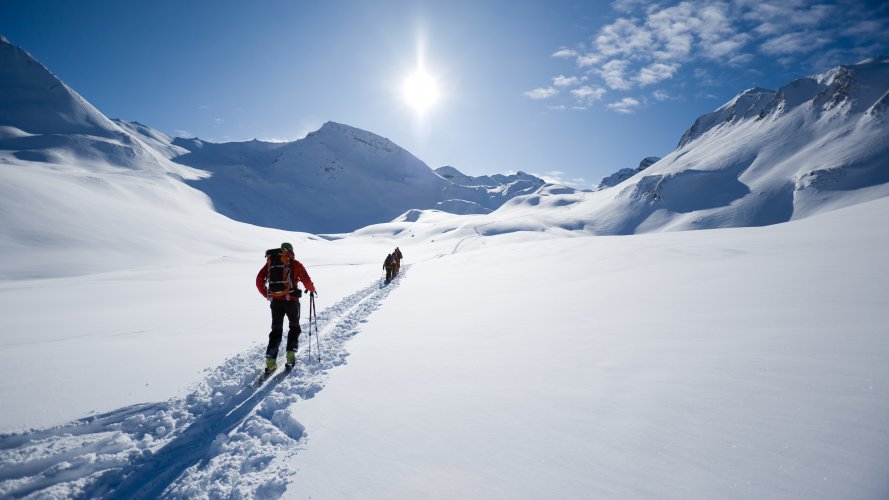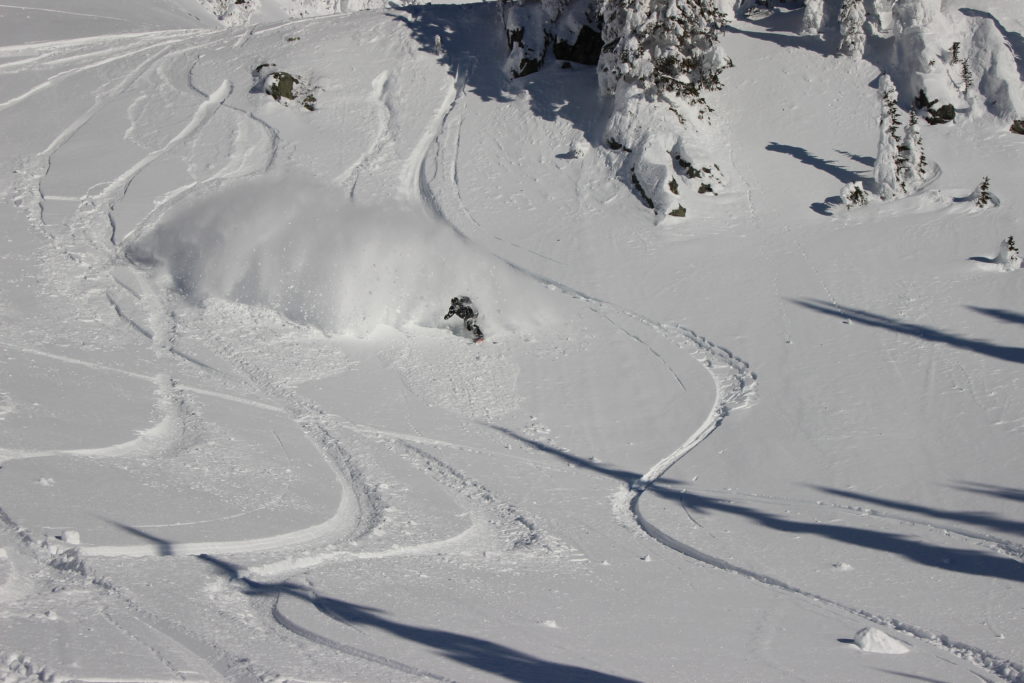
Backcountry is getting pretty popular these days. With its fresh lines, lack of crowds and endless options, it’s pretty easy to see why. Like most big payoffs there are a LOT of risks associated with venturing out of bounds. Often, there is no one to pull you out of danger other than the crew you bring with you, so you better be prepared.
Our Canadian/NZ resort manager Andy caught the bug a few years back. He’s been chasing backcountry certifications to help keep himself out of danger while hunting down fresh lines. Here is what he puts into his pack for a typical day of splitboarding.
Packing to Survive:

- Knowledge: before you even pack your bag you should have a good understanding of the zone you plan to shred. You need to know the avalanche forecast, the weather forecast. It’s also important to have some training on how to use all of your gear.
- Your pack: Something large enough to comfortably hold everything you decide you need. I use the Dakine Blade. It’s got a hefty 38L volume to hold all my goodies and, as it’s Dakine bag, it’s more durable than you would believe .
- Avalanche Rescue Gear: Shovel, transceiver and probe are the absolute minimum you should. Yes, that’s even if it’s just for a quick rip outside the boundary of your local resort. Make sure you have them easily accessible and lots of practice in using them. I use BCA gear, their tracker 3 beacon and a shovel that can be converted into a hoe for quick digging. I also have a 230cm probe for the rocky mountain snowpack .

- Emergency Communication Device: Your cell phone is probably not going to cut it if you need help. Depending on where I am I carry a radio or a Spot satellite messenger. Not only does the spot messenger use satellites to send out a distress signal, it can also send preset messages to saved numbers. You can even ask your partner to start dinner!
- Skins and Poles: You need to get up the hill before you can rip down. A well looked after set of skins will help you climb with ease. Poles will also make it way more efficient. I use black diamond Z compactor poles that I can easily stash in my pack when I’m not using them.
- Hats: I usually take a beanie for the ride down, but as I get pretty sweaty on the way up there is usually a mesh back hat in my bag to keep me cool. Luckily TTR has a great stock of these hats.
- Snow Saw: I carry a lightweight BCA saw for doing snowpack tests before dropping. It’s also super handy if you ever need to build a shelter or chop firewood.

- Eye Wear: Keep your eyes protected with a pair of sunnies for the hike up so you don’t get too sweaty. Also carry some goggles to keep all that pow out of your face on your way down. The Spy Happy lens make everything look way sharper so I use their Helm glasses and I carry a pair of Doom goggles with an extra lens in case conditions change quickly.
- Layers: Even the best meteorologist is often wrong so be prepared for anything. No matter how warm it is, I always take a packable puffy jacket and 3 sets of gloves; lightweight park gloves, full winter gloves and a toasty mitten. All three pairs are leather as it’s the best for durability and waterproofing.
- Snow study kit: Not essential but I love nerding out on snow crystals when stopping for lunch or a quick breath on the way up!
- First aid kit: I keep a small one in a waterproof bag just in case. Most of the gear I take is geared towards snowboard specific injuries like sprains and breaks. Things like triangle bandages also make good emergency binding straps and tie downs for a makeshift shelter.
- Fire starter kit: Super essential if you get stuck out longer than expected. There’s nothing better than a spring time backcountry cook out as well, provided you’re not in a national park.
- Toilet paper: You never know when nature will call and there are no leaves on the trees in the winter. TP also doubles as part of my fire starter kit.

- Compass and a map: It may seem a bit excessive if you are on home turf but these items are super lightweight. It’s good practice to whip them out on occasion.
- Ropes: I usually carry a few 2m prussic cords, 5mm in width, endless use for these.
- Duct Tape: I keep a small roll in the pack and it’s worth its weight in gold when something goes wrong.
- Water: I tend to be a bit skint taking water out into the backcountry, usually I will only take about a litre with me. That said, I do load up on a huge amount in the morning before setting out and I keep a large bottle in the car for when I get back. If I need more the fire starter kit can come out to melt snow into some tasty drinking water.
- Snacks: Probably the most important item in my pack, I try to go as gourmet as possible. There’s nothing like whipping out some fancy cheese after a heavy ascent to get your spirits up! I always have about twice as much food as I need, just in case. Any day trip we take out of the Lake Louise area always starts with a trip to Lagan’s bakery. There, we stock up on chewy snacks like brownies as they won’t freeze and get brittle.

Figuring out your backcountry gear list is going to be entirely up to you and your specific needs. Mix it up and find what works for you and your crew but feel free to use this as a starting place. If you are pretty fresh to the backcountry scene be sure to check in with your local resort or ski patrol. They can probably help you find some guides to keep you out of trouble.
If you are looking to take your first steps out of bounds be sure to check out our Banff courses as we have piles of options to help you get some fresh lines.
Banff Course Offerings
-Andrew